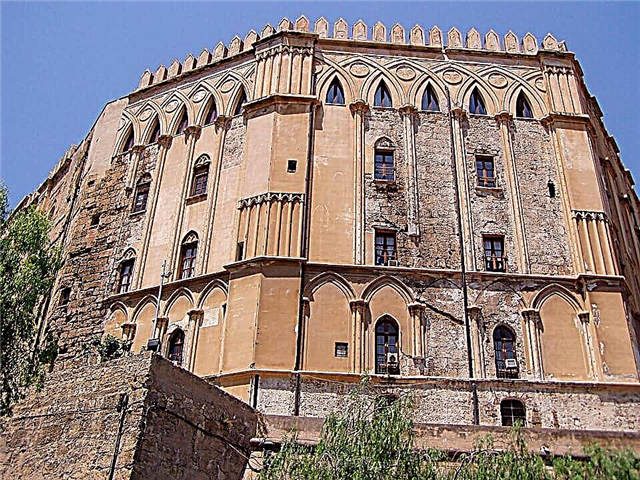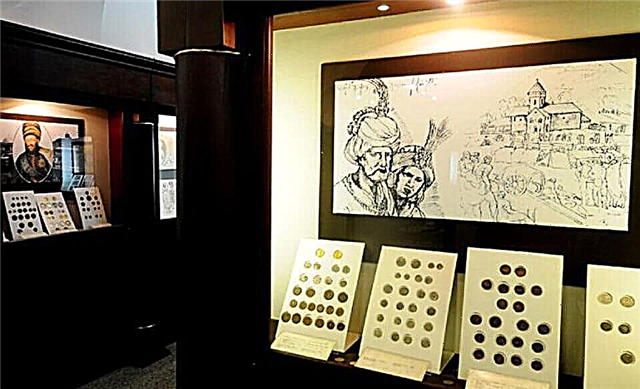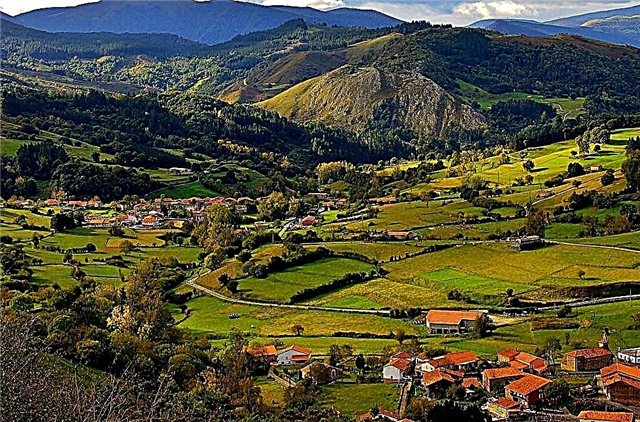The province of Cantabria, located in the northern part of Spain, is one of the regions richest in archaeological finds from the Paleolithic era. Among the many prehistoric caves discovered in this area, Altamira Cave, located near the largest center of the province of Santader, occupies a special place.

Cave history
Altamira's history dates back to archaeological finds by French scientists presented at the World's Fair in Paris in 1878. By chance, the exhibition was visited by an amateur archaeologist Marcelino Sanz de Soutuole from Spain. After seeing the ancient exhibits at the exhibition, Sautuola decided to thoroughly investigate an inconspicuous cave he accidentally discovered on the territory of his own possessions.

Returning to Spain, Soutuola immediately set about searching for artifacts confirming the possible stay of an ancient man in the dark and gloomy halls of Altamira. The search continued for quite a long time. One day he decided to explore the underground corridors with his nine-year-old daughter Maria. Looking with interest at the vaults in the main hall of the cave, Maria accidentally saw at first an image of a bison, and upon closer inspection, drawings of other animals were also discovered.
Soutuola immediately began to study the ancient petroglyphs, and soon described them in detail in "Brief Notes on Certain Historical Monuments of Santader Province." Despite the refusal of the editorial board of a reputable scientific journal to publish on its pages the materials of the brochure he published, the discovery of traces of the ancient man's stay in the Altamira cave was soon spoken about throughout Spain.

Cave paintings
Many volunteered to visit the cave and see firsthand the creations of man of the Ice Age. Don Juan Vilanova y Piera, a professor at the University of Madrid, and Alfonso XII, the King of Spain, became interested in the drawings of the ancient artist. They were the first to visit the underground gallery of the Paleolithic era of Altamira. The venerable professor was personally convinced of the true origin of the drawings and devoted a number of lectures to them at the university.
However, the professor's support for the discovery of Soutuola met with fierce opposition from the leading archaeologists of the time, Professor Cartallac and his teacher Gabriel de Mortilla. Without even trying to visit the cave and thoroughly investigate the discovered artifacts, pundits showered Southwola and Vilanova, who supported him, with ridicule and ironic remarks.
From the time of the discovery of this cave until the beginning of the twentieth century, the authenticity of the rock carvings was questioned in many scientific circles. Therefore, the history of the discovery of ancient drawings in Altamira is associated with a long-term rejection of the new, which goes beyond ordinary knowledge, fierce disputes between scientists, caustic ridicule of authoritative archaeologists and bitter disappointments. Sadly, Southwala never lived to see the recognition of his remarkable discovery. Only many years later, a monument to the discoverer of rock carvings was erected at the entrance to the Altamira cave as a sign of gratitude to mankind for his invaluable contribution to archeology.
It took venerable archaeologists twenty years after the discovery of drawings of the Ice Age in Altamira to recognize the authenticity of the petroglyphs after similar finds in the caves of La Mut, Marsula and Shabo. For a long time, scientists archaeologists of that era could not come to terms with the idea that ancient man, not obeying the universal laws of evolution, was able to create real masterpieces on the walls of caves even without access to sunlight.

Rock carvings, which caused a lot of controversy among scientists and archaeologists, to this day arouse genuine interest among specialists and admiration of visitors. The images of wild and domesticated animals made by ancient man during the Ice Age are striking in their authenticity and the illusion of movement created with the help of natural colors and irregularities in the surface of the cave walls.
The sensation of movement of animals painted with ocher, coal and hematite is enhanced by the flickering flame. Remains a mystery not only the skill of the ancient artist, who managed to depict animals and even capture the image of an ancient man, but also his work in that section of the cave where the rays of the sun could not penetrate at all. In addition to the drawn animals, there are lines drawn with fingers, strange shapes and incomprehensible symbols, indicated by dots and strokes. Similar images exist in many caves in different countries, and each of them is carefully studied by specialists.

The study of the cave and its petroglyphs allowed scientists to draw a conclusion about its incomparable value. And in 1985 Altamira was awarded the title of a UNESCO World Heritage Site.
Cave Twin - Altamira-2
As soon as they no longer doubted the true origin of the petroglyphs, the crowds wishing to visit the Altamira cave and see the creations of the ancient man with their own eyes increased every year, which negatively affected the state of the cave and its petroglyphs. The mold that appeared due to the change in the microclimate in the cave began to cover and destroy the ancient drawings.
Experts monitoring the state of Altamira and its petroglyphs first decided to limit the number of visitors. However, the situation remained critical and the petroglyphs continued to collapse. The original decision, made in the early 90s, to build a twin of Altamira with an absolutely identical appearance to the natural cave changed the situation for the better. This is how Altamira-2 appeared.
Using paints from natural raw materials like people of the Paleolithic era, contemporary artists Pedro Saura and Matilda Muskis managed to create copies of ancient rock masterpieces. Marcelino's daughter Maria proved to be a worthy successor to her father's ideas. Being married to a wealthy man, she, together with her husband, organized a fund, thanks to which it became possible to create a copy of the existing Altamira. And history repeated itself again. Only the new King of Spain with his Queen was the first to visit Altamira-2.

Altamira-2 was created specifically for visiting tourists. Getting into an artificially arranged cave, none of them feel that it was created by human hands. Altamira-1 serves science. The results of studies of petroglyphs show that rock paintings are more than 14 thousand years old, and some images are more than 16 thousand years old. Experts were able to prove that red horses were depicted earlier than buffaloes, and paintings and mysterious signs appeared much later. Altamira's rock paintings are so popular that copies of them are kept in many museums around the world, including the Madrid National Archaeological Museum.
Recommended reading Interesting facts about Spain.











